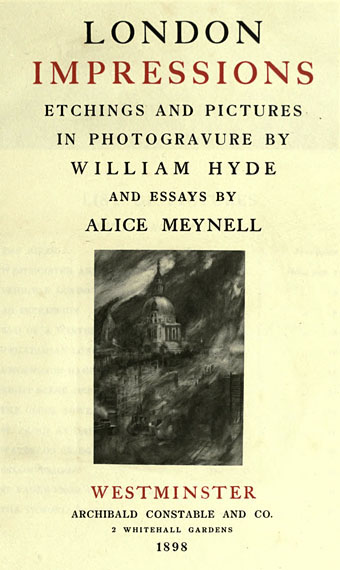
London in 1898 was the most populous city in the world, a metropolis of “four million souls” as Arthur Conan Doyle continually reminds us in the Sherlock Holmes stories. The stereotypical representation of London in the 19th century is of a city wreathed in fog but the reality was closer to the dense smogs that plague Chinese cities today. The four million souls heated themselves by burning wood and coal, and the resulting smoke (and a fair amount of steam, no doubt) combined with the British climate to create the noxious, tinted “fogs” that fill the streets of Victorian fiction.
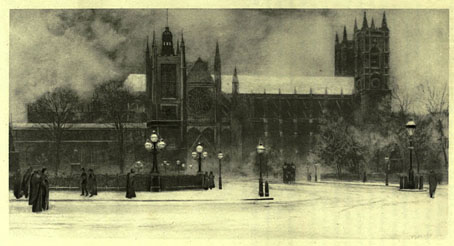
Whatever the health hazards, the vaporous atmosphere had its champions in artists such as Claude Monet and James Whistler, both of whom relished the way the smoky air softened the silhouettes of the city. William Hyde may be added to the list for this superb series of etchings showing London at its most tenebrous, another chance discovery at the Internet Archive. London Impressions is an ambivalent celebration of the capital as a city of shadows, smoke and fog, the essays by Alice Meynell ruefully admitting that while the industrial cities of the north may rival London for their polluted atmosphere, their smaller size means that blue sky is never far away, something the Londoner of 1898 couldn’t take for granted. This is a marvellous book, and one I’d love to own if it wasn’t so rare; there’s a copy on eBay at the moment for $1,640. At least we can read it (and download the pages) here.
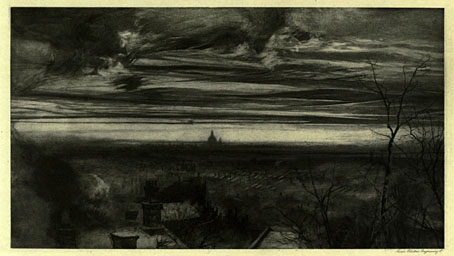
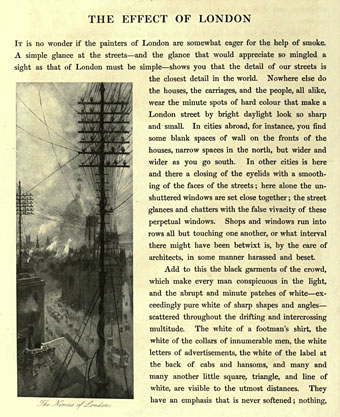
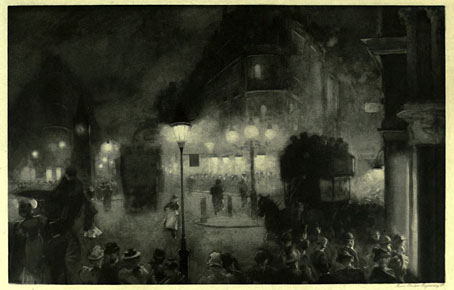
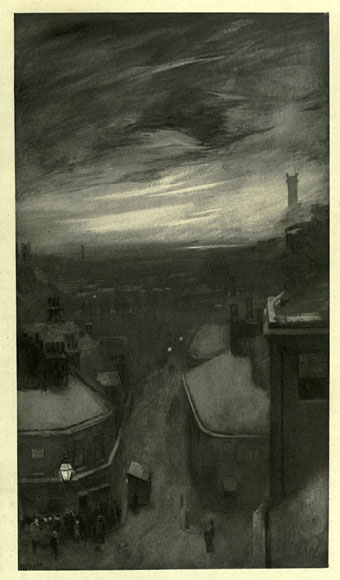
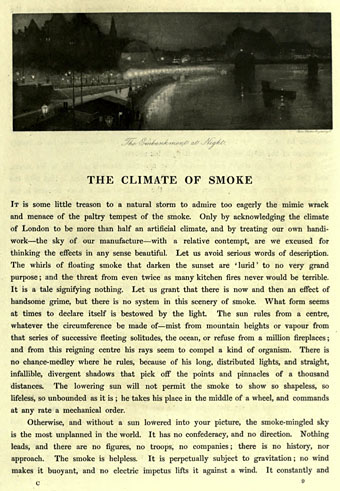
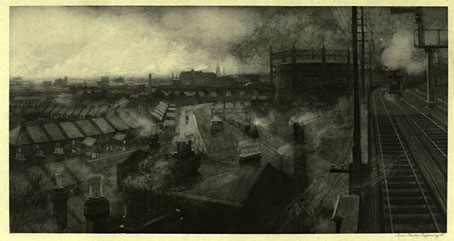
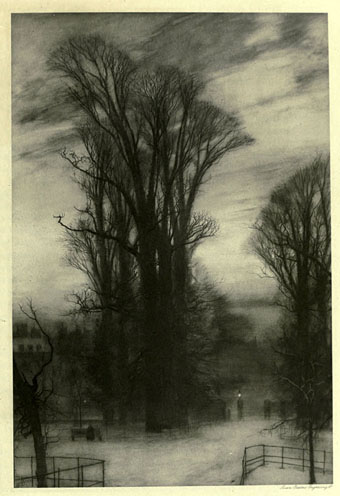
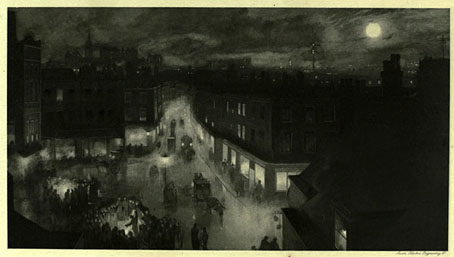
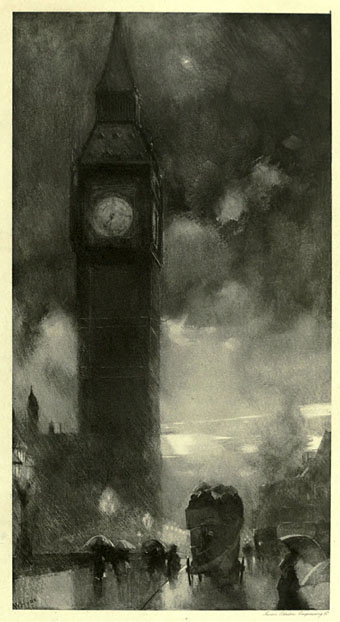
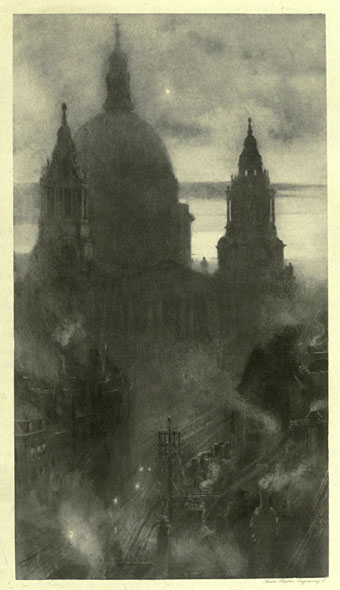
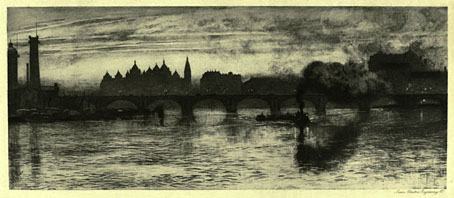
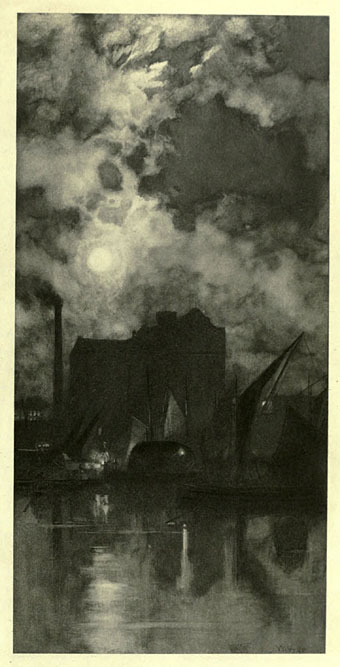
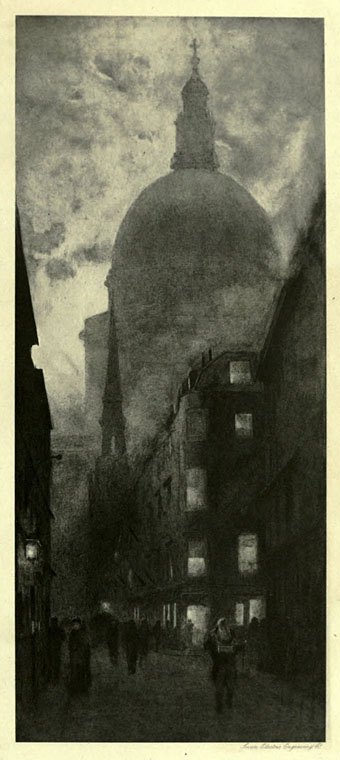
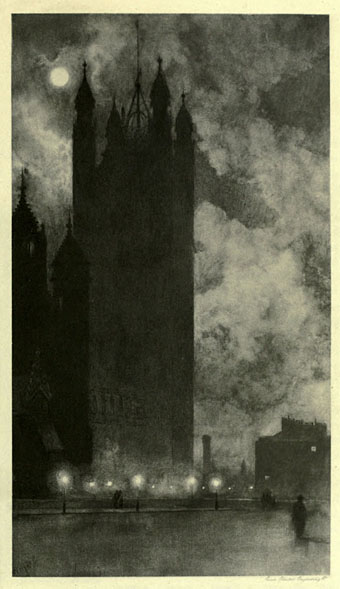
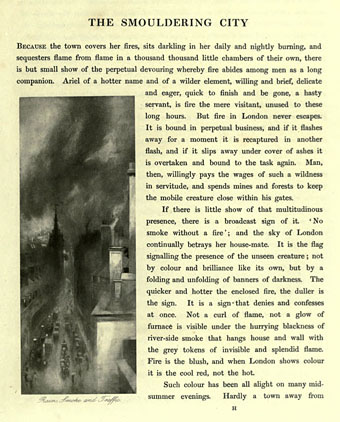
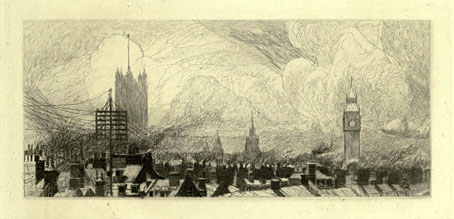
Previously on { feuilleton }
• Valette’s steam and smoke
• Steam and smoke
• The coming of the dust
• The art of John Atkinson Grimshaw, 1836–1893

Beautiful in an odd sort of way. Wabi-Sabi? I wonder if Arthur Machen saw this tome. He certainly was there in the mix.
And then there is that expression that spread around the then ’empire’: ‘going to the big smoke’. This expression is still used in Australia today.
Daniel: I think to anyone living there at the time the miasmas wouldn’t really need pointing out. London today is filled with traffic fumes but in the 1890s the smell of coal smoke (and horse dung) would have been omnipresent in the winter months.
Ian: Yes, I was checking the OED for the origins of the name “Smoke” for a large city. In Australia it was an Aboriginal term while in England it was rural in origin. The equivalent in Scotland was “Auld Reekie” for the smokes of Edinburgh.
John – by way of postscript – for Anglo-Australians – it was definately that rural English denotation that was in play in my childhood in the 1960s. Even then, indigenous cultures were not taken nearly as seriously as they are today.